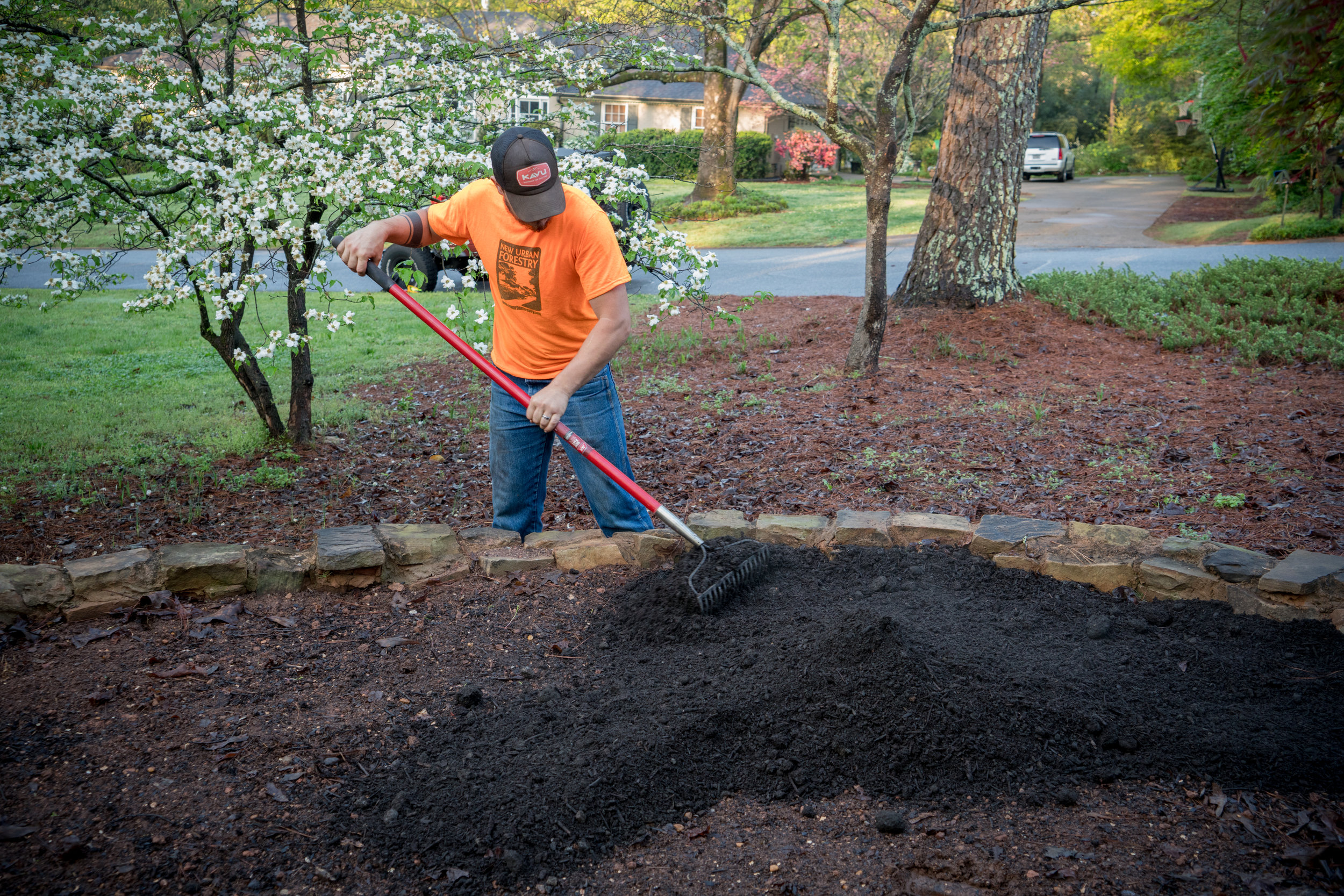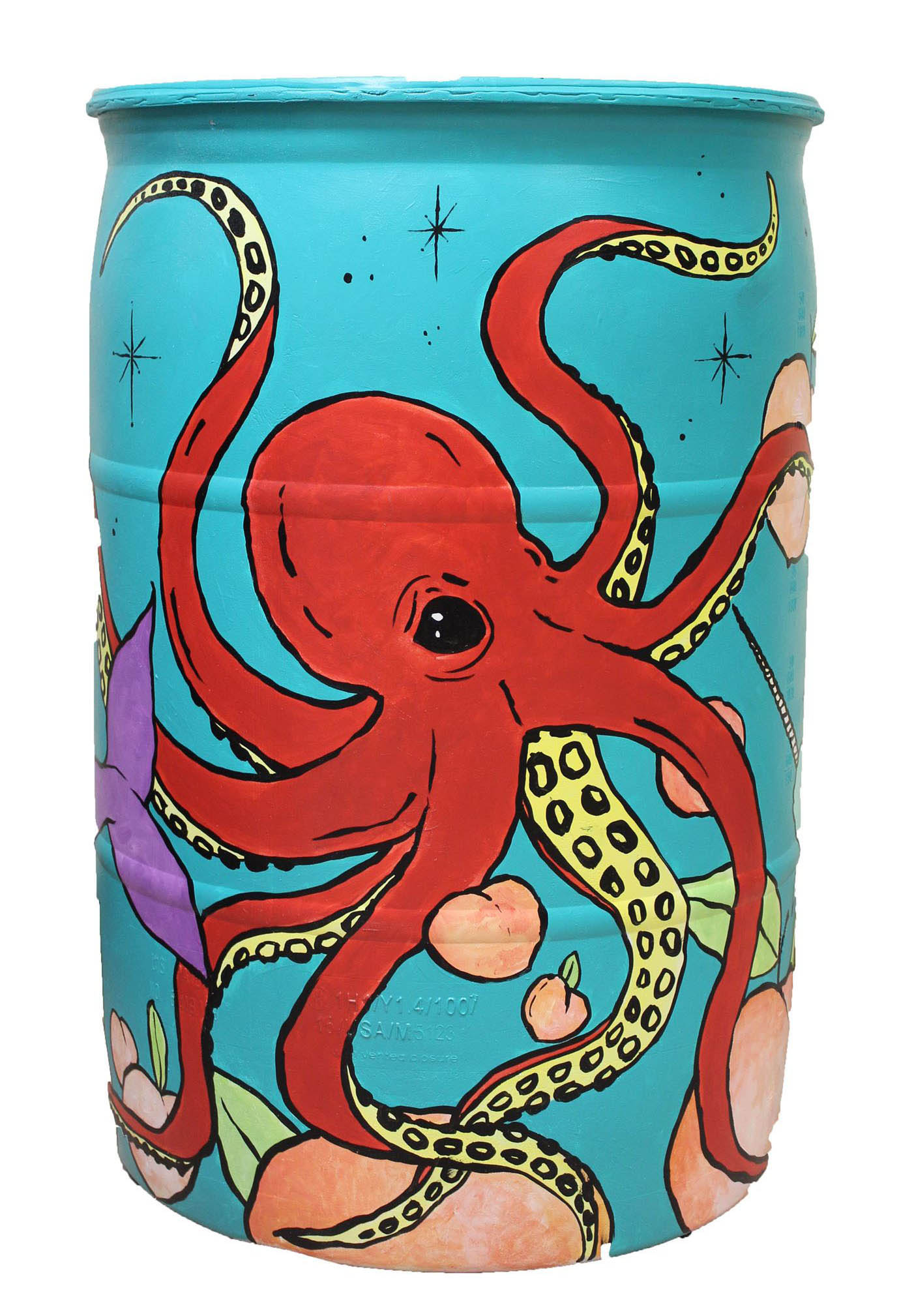Effective Use of Runoff in the Urban Landscape
By Hall Roberts in Athens Georgia for New Urban Forestry
Rainwater Harvesting
We had a great water event in the Athens area on February 7, 2018, bringing the total for the month close to 3 inches of rain. When we have these cold, wet, rainy days it gives our crews a much needed rest day, but it also inspires us at NUF to think about harvesting all that water and using it in our landscapes.
Why is rainwater harvesting is important?
Before urban development took over the Athens Clarke County and surrounding areas, this area was considered Piedmont Forest, which has many of the features of the landscape you see when you visit North Georgia. It is made up of dense forest with very distinct canopy, sub-canopy, and ground cover. In addition to all the plants, it has a very rich, thick layer of duff laid over the soil.
Dry Creek Bed
This thick forest structure and thick layer of mulch acts as a sponge for rainwater and when that sponge is filled to capacity and runoff takes place, it is clean, filtered runoff. Think about how clear and clean the North Georgia streams are and you can imagine how it was in our forest pre-development.
As development began to take over the region, we lost the thick stands of forests and gave way to impervious surfaces. Roofs, roads, compacted soils, and any surface that sheds water is considered an impervious surface. These impervious surfaces do not allow any water to soak in and be filtered; it concentrates rainwater into gutters and roads, which increases the velocity of the storm water and causes erosion. This can negatively impact our streams, rivers, and lakes by filling them with sediment from these rain events.
Installing rainwater harvesting practices at the landscape source is a way to mitigate the pollution and sedimentation caused by this storm water runoff in the urban core.
Passive rainwater harvesting uses landscape practices to slow water down and allow it to infiltrate into the soil.
Rain Garden
An example of how passive rainwater harvesting can be integrated into the landscape is through a rain garden, which is a small detention basin that holds storm water and allows it to slowly infiltrate into the soil.
Full Rain Garden.
Mulch can also be used; 3-4 inches of mulch is a wonderful thing for plants as it regulates soil temperature and moisture. Mulch also mimics the duff layer of the forest and will hold a certain amount of water and filter stormwater so it will hold sediment and pollutants.
One of our favorite ways to incorporate passive rainwater harvesting into the landscape is with dry creek beds. Rocks and gravel will slow water down and allow it to lose that erosion causing velocity. These can be incorporated into the landscape design to not only provide functionality, but be aesthetically pleasing.
Active rainwater harvesting is the action of harvesting water in barrels and cisterns, once again we are holding the water onto the landscape, not allowing it to runoff and slowly releasing it into the landscape. The added benefit is that we can irrigate our landscape plants with the harvested water during times of dry weather.
Dry creek bed.
A quick calculation of the amount of water that is coming from a roof is pretty simple. You can expect .6 gallons of water to be harvested per square foot of roof per inch of rain. So let’s say that we have a 100 square feet of roof being drained by one down spout and we have a 50 gallon rain barrel there at that downspout.
100 sq ft x 1.23 inches of rain (ACC airport reports for 2/7/18) x .6 =
73.8 gallons of water were able to be harvested from the roof.
If our 50 gallon rain barrel was empty, we filled it up and had 23.8 gallons of water of overflow.
Rain Barrell painted for the 2017 "Roll Out the Barrels" by Maggie Baxter.
As you can see, we can fill our barrels and cisterns fairly quickly with a small roof. If we were to combine these techniques in the landscape, active rainwater harvesting and passive rainwater harvesting, we could have a net zero runoff landscape.
At NUF we are passionate about sustainable landscape design and build and we see great benefit in combining active and passive rainwater harvesting systems with mature trees and native plantings in the landscape. This design and installation can mimic the functions of the old growth Piedmont Forests that were once so prevalent in the area, while being beautiful. That is something to think about the next time we have a long, dreary rainy day.






